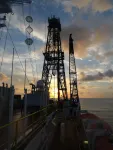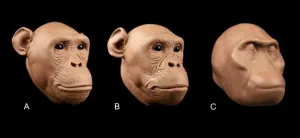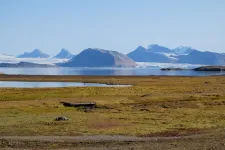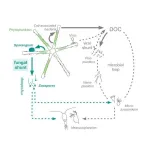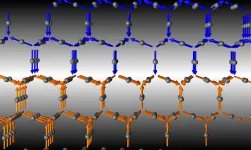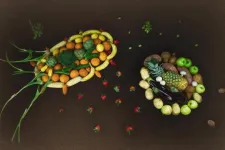(Press-News.org) PROVIDENCE, R.I. [Brown University] -- A new study of monsoon rainfall on the Indian subcontinent over the past million years provides vital clues about how the monsoons will respond to future climate change.
The study, published in Science Advances, found that periodic changes in the intensity of monsoon rainfall over the past 900,000 years were associated with fluctuations in atmospheric carbon dioxide (CO2), continental ice volume and moisture import from the southern hemisphere Indian Ocean. The findings bolster climate model predictions that rising CO2 and higher global temperatures will lead to stronger monsoon seasons.
"We show that over the last 900,000 years, higher CO2 levels along with associated changes in ice volume and moisture transport were associated with more intense monsoon rainfall," said Steven Clemens, a professor of geological sciences (research) at Brown University and lead author of the study. "That tells us that CO2 levels and associated warming were major players in monsoon intensity in the past, which supports what the models predict about future monsoons -- that rainfall will intensify with rising CO2 and warming global temperature."
The South Asian monsoon is arguably the single most powerful expression of Earth's hydroclimate, Clemens says, with some locations getting several meters of rain each summer. The rains are vital to the region's agriculture and economy, but can also cause flooding and crop disruption in years when they're particularly heavy. Because the monsoons play such a large role in the lives of nearly 1.4 billion people, understanding how climate change may affect them is critical.
For several years, Clemens has been working with an international team of researchers to better understand the major drivers of monsoon activity. In November 2014, the research team sailed aboard the research vessel JOIDES Resolution to the Bay of Bengal, off the coast of India, to recover sediment core samples from beneath the sea floor. Those core samples preserve a record of monsoon activity spanning millions of years.
The rainwater produced by the monsoons each summer eventually drains off the Indian subcontinent into the Bay of Bengal. The runoff creates a layer of dilute seawater in the bay that rides atop the denser, more saline water below. The surface water is a habitat for microorganisms called planktonic foraminifera, which use nutrients in the water to construct their shells, which are made of calcium carbonate (CaCO3). When the creatures die, the shells sink to the bottom and become trapped in sediment. By taking core samples of sediment and analyzing the oxygen isotopes in those fossils, scientists can divine the salinity of the water in which the creatures lived. That salinity signal can be used as an indicator of changing rainfall amounts over time.
Other data from the samples complement the foraminifera data. River runoff into the bay brings sediment from the continent with it, providing another indicator of rain intensity. The carbon isotopic composition of plant matter washed into the ocean and buried in sediment offers yet another rainfall-related signal that reflects changes in vegetation type. The hydrogen isotope composition of waxes on plant leaves varies in different rainfall environments, and that signature can be reconstructed from sediment cores as well.
"The idea is that we can reconstruct rainfall over time using these proxies, and then look at other paleoclimate data to see what might be the important drivers of monsoon activity," Clemens said. "That helps us to answer important questions about the factors driving the monsoons. Are they primarily driven by external factors like changes in Earth's orbit, which alter the amount of solar radiation from the sun, or are factors internal to the climate system like CO2, ice volume and moisture-transporting winds more important?"
The researchers found that periods of more intense monsoon winds and rainfall tended to follow peaks in atmospheric CO2 and low points in global ice volume. Cyclical changes in Earth's orbit that alter the amount of sunlight each hemisphere receives played a role in monsoon intensity as well, but on their own could not explain monsoon variability. Taken together, the findings suggest that monsoons are indeed sensitive to CO2-related warming, which validates climate model predictions of strengthening monsoons in relation to higher CO2.
"The models are telling us that in a warming world, there's going to be more water vapor in the atmosphere," Clemens said. "In general, regions that get a lot of rain now are going to get more rain in the future. In terms of the South Asians monsoons, that's entirely consistent with what we see in this study."
INFORMATION:
The research was supported by the U.S. National Science Foundation (OCE1634774), the Japanese Society for the Promotion of Science (JPMXS05R2900001 and 19H05595), the Japanese Agency for Marine-Earth Science and Technology, the United Kingdom Natural Environment Research Council (NERC; NE/L002493/1), the United States Geological Survey, and Technology and Research Initiative Fund (Arizona Board of Regents).
Accurate soft tissue measurements are critical when making reconstructions of human ancestors, a new study from the University of Adelaide and Arizona State University has found.
"Reconstructing extinct members of the Hominidae, or hominids, including their facial soft tissue, has become increasingly popular with many approximations of their faces presented in museum exhibitions, popular science publications and at conference presentations worldwide," said lead author PhD student Ryan M. Campbell from the University of Adelaide.
"It is essential that accurate facial soft tissue thickness measurements are used when reconstructing the faces of hominids to reduce the variability exhibited in reconstructions of the same individuals."
Hominids have been readily accepted ...
A new study shows that substantial amounts of carbon dioxide were released during the last millennium because of crop cultivation on peatlands in the Northern Hemisphere.
Only about half of the carbon released through the conversion of peat to croplands was compensated by continuous carbon absorption in natural northern peatlands.
Peatlands are a type of wetland which store more organic carbon than any other type of land ecosystem in the world.
Due to waterlogged conditions, dead plant materials do not fully decay and carbon accumulates in peatlands over thousands of years.
Therefore, natural peatlands help to cool the climate by capturing carbon dioxide (CO2) from the atmosphere ...
ABSTRACT #9003
HOUSTON - Results from the Phase II cohort of the CodeBreaK 100 study showed that treatment with the KRAS G12C inhibitor sotorasib achieved a 37.1% objective response rate and 12.5 months median overall survival in previously treated patients with KRAS G12C-mutated non-small cell lung cancer (NSCLC), according to researchers from The University of Texas MD Anderson Cancer Center. The findings were presented today at the 2021 American Society of Clinical Oncology (ASCO) Annual Meeting and published in the New England Journal of Medicine.
Trial results indicated the targeted therapy was safe and tolerable in a heavily pre-treated patient population. The reported findings make sotorasib the first KRAS G12C inhibitor to demonstrate overall survival benefit in a registrational ...
A research group of the Department of Pharmacy and Biotechnology of the University of Bologna analyzed more than one million SARS-CoV-2 genome sequences. This analysis led to the identification of a new variant that, over the past weeks, has been spreading mostly in Mexico but has also been found in Europe. Their paper published in the Journal of Medical Virology presented the so-called "Mexican variant", whose scientific name is T478K. Like other strains, this presents a mutation in the Spike protein, which allows coronaviruses to attach to and penetrate their targeted cells.
"This variant has been increasingly spreading among people in North America, particularly in Mexico. To date, this variant covers more than 50% of the existing viruses in this area. The ...
Tiny algae in Earth's oceans and lakes take in sunlight and carbon dioxide and turn them into sugars that sustain the rest of the aquatic food web, gobbling up about as much carbon as all the world's trees and plants combined.
New research shows a crucial piece has been missing from the conventional explanation for what happens between this first "fixing" of CO2 into phytoplankton and its eventual release to the atmosphere or descent to depths where it no longer contributes to global warming. The missing piece? Fungus.
"Basically, carbon moves up the food chain in aquatic environments differently than we commonly think it does," said Anne Dekas, an assistant professor of Earth system science at Stanford University. Dekas is the senior ...
Though it might seem inanimate, the soil under our feet is very much alive. It's filled with countless microorganisms actively breaking down organic matter, like fallen leaves and plants, and performing a host of other functions that maintain the natural balance of carbon and nutrients stored in the ground beneath us.
"Soil is mostly microorganisms, both alive and dead," says END ...
Like all metals, silver, copper, and gold are conductors. Electrons flow across them, carrying heat and electricity. While gold is a good conductor under any conditions, some materials have the property of behaving like metal conductors only if temperatures are high enough; at low temperatures, they act like insulators and do not do a good job of carrying electricity. In other words, these unusual materials go from acting like a chunk of gold to acting like a piece of wood as temperatures are lowered. Physicists have developed theories to explain this so-called metal-insulator transition, but the mechanisms behind the transitions are not ...
There's a lot of interest right now in how different microbiomes--like the one made up of all the bacteria in our guts--could be harnessed to boost human health and cure disease. But Daniel Segrè has set his sights on a much more ambitious vision for how the microbiome could be manipulated for good: "To help sustain our planet, not just our own health."
Segrè, director of the END ...
A new drug reduced tumor size in patients who have lung cancer patients with a specific, disease-causing change in the gene KRAS, a study found.
The results of the CODEBREAK 100 phase 2 clinical trial were presented June 4, 2021, at the American Society of Clinical Oncology (ASCO) annual meeting and published simultaneously in the New England Journal of Medicine. The efficacy and safety of the drug sotorasib, developed by Amgen Inc., was tested in patients with non-small-cell lung cancer (NSCLC) harboring a specific change, or mutation, in the DNA code for KRAS.
The KRAS mutant protein targeted in the study was p.G12C, in which a glycine building ...
Washington, DC--A team led by Carnegie's Thomas Shiell and Timothy Strobel developed a new method for synthesizing a novel crystalline form of silicon with a hexagonal structure that could potentially be used to create next-generation electronic and energy devices with enhanced properties that exceed those of the "normal" cubic form of silicon used today.
Their work is published in Physical Review Letters.
Silicon plays an outsized role in human life. It is the second most abundant element in the Earth's crust. When mixed with other elements, it is essential for many construction and infrastructure projects. And in pure elemental form, it ...
